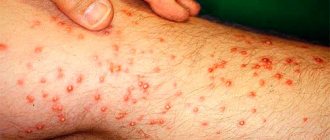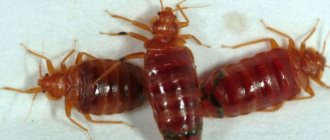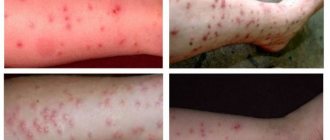Potatoes are the most common vegetable crop to be grown in many regions. At the same time, cultivation is carried out both on an agricultural scale and for home use. Among many gardeners, potatoes have been and remain the main crop on the site. But, like all garden crops, root crops are susceptible to many diseases, the most common of which is scab. This disease significantly affects not only the appearance of the tubers, but also affects the taste and shelf life. Therefore, it is important to know how to deal with scab on potatoes in order to keep the crop intact.
Pathogens of potato scab
Scab is a fungal disease of potatoes, the causative agent of which is located in the soil and affects not the plant itself, but the tubers, penetrating through microscopic cracks in the peel. In rare cases, infection of roots and even stems is possible.
Attention! Scab, unlike many other diseases, does not lead to the death of the plant, but has a worse effect on the quantity and quality of the crop.
Affected potatoes significantly lose their marketability and taste. The starch content is reduced by 2-3 times, and the storage period of root crops is also reduced.
This disease is especially dangerous because its causative agents are various types of fungi. And depending on the type of pathogen, varieties of the disease are distinguished. Since the characteristic features of the occurrence and progression of scab are different depending on its type, measures to prevent and combat it also have a number of differences.
Below is a brief description with photos of different types of potato scab, as well as methods of treatment and prevention of this disease.
Signs of appearance
Infection of new seedlings occurs at the moment they are planted in the ground, but this is invisible to the eye - the spores initially capture only the tubers. Over time, farmers can detect the disease by characteristic signs:
- Potato sprouts germinate unevenly; 20-30% of the seed does not germinate at all.
- The tubers become covered with pustules (their color and shape depend on the type of disease), which grow over time throughout the vegetable.
- The dug up potatoes are covered with white mycelium.
- The leaves on the bushes begin to grow small and curl into a tube.
- White spots appear on the stems and leaves.
- After 2 months, potatoes in the basement begin to shrink and rot.
Since most types of scab affect only the root system and tubers, its spread is unnoticeable. But if there are suspicions that seedlings are infected, it is best to dig up a couple of bushes and check the tubers for fungus.
Types of potato scab
The word “scab” itself means “scaly”, “rash”, “scab”. In other words, damage to the surface, in this case the potato skin. The disease is caused by various types of soil fungi, which are very resistant to the most unfavorable influences (drought, frost), and can persist in the soil for a long time. Therefore, depending on the pathogen, potato scab is divided into the following types:
- ordinary;
- black;
- powdery;
- silver;
- tuberous.
Common potato scab
Common scab is the most common type of this disease. The causative agent is a fungus called Streptomyces scabies. It develops favorably in calcareous soils, as well as with low or medium acidity. Most found in dry sandy soil. It activates and significantly affects the crop at temperatures above +25°C. Most often it has a detrimental effect on potatoes of red varieties and with thin skin.
Tubers infected with common scab can be recognized by the following signs:
- the tubers have brown, small, irregularly shaped ulcers;
- the peel may feel rough to the touch;
- Slightly noticeable mesh grooves may also appear on the surface of the root crops.
With significant damage, cracks may form on the potatoes, which contribute to the rotting of the root crops.
Attention! During storage, tubers are not able to infect a healthy crop, since in an unfavorable environment the pathogen is at rest, but does not die.
The disease itself does not spread to other parts of the potato. Also, a small infection with common scab is not dangerous for the crop, since during the storage period the development and further damage to the tubers is suspended.
Black potato scab
The most dangerous disease for potatoes is black scab, also called rhizoctonia. The causative agent of this type of disease is the fungus Rhizoctonia solani. Most often it develops in loamy and waterlogged soils. The moment of activation occurs at a temperature of +18°C.
It can affect a plant at any stage of its development. It is especially dangerous because it spreads not only to tubers, but also to other parts of the potato. If signs of disease in the above-ground part appear, the plant cannot be saved; it must be completely destroyed.
Important! It is necessary to prevent the appearance of black scab immediately before planting by treating the planting material. This is necessary because there are no potato varieties resistant to this disease yet.
Signs that tubers are affected by rhizoctonia blight are black or dark brown spots on the skin that are difficult to scrape off. An inexperienced gardener may mistake this manifestation on the surface of the root crop for adhered dirt. Therefore, it is important to know what black scab looks like on potatoes. You can see the disease in detail in the photo.
Powdery potato scab
Powdery potato scab is also a common disease, but unlike ordinary scab, it develops in waterlogged heavy soil. The causative agent is the fungus Spongospora subterranea, which is very mobile and can infect not only tubers, but also roots.
The particular danger of this type of disease is that the fungus is an amoeba-like clot of protoplasm and is able to move freely in the upper layers of the soil, finding the plant on its own.
Attention! The pathogen is activated only in soil that is oversaturated with moisture (humidity is more than 70%), and when it dries, the fungus goes into a dormant state, but in this form it can live in the ground for up to five years.
Signs of potato damage by powdery scab include:
- the appearance of white growths on the stems;
- in the formation on root crops of a large number of brown with a red tint of warty growths of various sizes.
Silvery potato scab
Silvery potato scab, caused by the fungus Helminthosporium solani, is considered one of the most dangerous diseases.
Grows in any type of soil: both loamy and sandy. The pathogen is most active at high humidity. Retains its activity even at low temperatures - up to 3°C. It affects the plant at the stage of flowering and tuber formation. It can spread not only in the upper layers of the soil, but also infect the harvest from the affected tuber that has already been harvested for storage.
The most basic sign of the disease are spots of arbitrary shape, gray with a silvery tint. They can occupy up to 40% of the total surface of the tuber. The affected root crop begins to dry out and decrease in size.
Lumpy potato scab
Tuberous scab, also called oospora, becomes active in the spring season. The causative agent of the disease is the fungus Oospora pustulans Owen.
The pathogen is activated at a temperature of +11°C. Penetrates into tubers mainly through eyes, as well as through mechanical damage and lentils. Brown bumps with depressed edges begin to form on the affected potatoes. Often the tubercles merge, forming large growths.
The place of distribution is sandy soddy-podzolic soil. Very rarely, the pathogen can appear in peat soil.
Potato scab - what is it and what does it look like?
A disease of fungal etiology, the development of which primarily requires moisture. It is in a warm and humid environment that fungal spores are activated. External characteristic signs are the appearance of peeling of the surface layer on fruits and roots, the formation of spots, ulcers and warts. There are several types of scab.
Ordinary - mainly affects the skin of the tuber and, less often, the pulp only during growth. Characterized by the appearance of brown spots on the surface. This does not reduce the quality of the root and fruit, but significantly reduces the presentation.
Silvery , when you see that the fruit is starting to dry out, it doesn’t matter if it’s apples or potatoes. The mycelium of the pathogen spreads only in the cells of the potato tuber skin. At first the peel is light, then turns brown. It's not just the appearance that deteriorates. Seed qualities suffer: the rudimentary eyes are affected, there are fewer of them, they germinate more slowly, which subsequently affects the growth of the plant as a whole. As a result, yields are reduced by about a third.
Black (rhizoctoniosis) is the most typical and common potato disease. When affected by black scab, black growths (sclerotia) or dark depressed spots appear on the tubers. Outwardly, they look like lumps of earth stuck to the tuber, which can be difficult to scrape off.
Powdery is dry rot and late blight. White growths of irregular shape form on the roots, which turn brown over time. Light warts-pustules form on the tubers. After harvesting, over time they dry out, become rounded, and then crack, acquiring a star-shaped shape. The causative agents of the disease—myxomycete spores—remain in the cracks in the form of dust.
Tuberous or oospora. More often it affects only potato tubers, which affects the seed material. The eyes of the tubers are affected. The disease is especially dangerous because it is quite difficult to fight. Affected seed material will not produce good and friendly shoots. And only timely preventive measures will help. And if nothing is done, then with each city more and more tubers will be affected by the disease and the yield will fall.
How to get rid of scab on potatoes
Despite the prevalence of the disease, many gardeners do not give it due importance. After all, with a slight infection, root vegetables, if properly processed, are suitable for food, except for those infected with rhizoctonia. But it is still necessary to fight the disease, because not only the appearance of root vegetables suffers, but also their taste.
Today, there are various methods of combating potato scab - from proper preparation of planting material to treatment of plants during the growth period.
Agrotechnical measures
Compliance with the rules of planting and cultivation allows you to successfully resist potato scab. Today, there are a number of agrotechnical measures that help create uncomfortable conditions for the development and spread of pathogens of this disease. By adhering to the following general actions, you can minimize the risk of crop damage, namely:
- Sorting and selection of planting material, which consists in selecting only healthy, undamaged tubers. Additionally, you can treat the planting tubers with a solution of boric acid in a ratio of 10 g per 9 liters of water.
- It is best to sow the tubers deeper.
- Maintain crop rotation, periodically changing the place where potatoes are planted.
- Before planting, it is important to check the acidity of the soil, since scab pathogens develop more favorably in soil with an acidity above 6.0 pH. If necessary, soil acidity can be adjusted by applying mineral fertilizers before planting tubers.
- After harvesting, it is important to remove all waste material. Spoiled tubers, roots or stems should not be left; it is best to burn them.
Chemical and biological agents
In addition to following the rules for planting potatoes, you can also resort to various drugs of chemical or biological origin to combat scab. Among the modern products available on the market for the prevention and treatment of fungal diseases, the following have proven to be most effective:
- “Quadris” - intended for spraying the soil before planting, effective for combating silver and black scab;
- “Prestige” – helps combat common and black scab, used for processing seed material;
- "Maxim" - also intended for treating tubers before planting;
- “Tuber shield” – protects potatoes from any type of disease, used during planting;
- "Bio Protect" is a universal disinfectant that is used to treat potatoes from scab at the time of planting and during the period of collection for storage.
Attention! Before using any specified product, it is important to follow the instructions for use and observe personal protection.
Traditional methods of combating potato scab
Among the folk methods of combating potato scab, the following should be highlighted:
- timely crop rotation;
- careful selection of seed material;
- compliance with the watering regime, destruction of weeds and timely feeding.
Also, before harvesting, you need to cut off the tops two weeks in advance, which will help strengthen the peel, which means the tubers will be additionally protected.
If the disease has attacked the crop, then the following steps will help get rid of scab on potatoes:
- After harvesting, the affected potatoes are carefully sorted - they can be used for food only if the damage is small, and such tubers should not be taken at all for subsequent sowing;
- After collection, the soil can be sprinkled with mustard and watered generously.
Types of potato scab
A fungus such as potato scab is not only unpleasant, but also has several varieties. Below, more about each of them. After all, knowing exactly what kind of scab is on potatoes, the question of how to get rid of it will be resolved faster.
Common potato scab
Common scab appears as light brown sores that develop into large scabs. They can be located either on a separate section of the tuber or cover the potatoes completely.
Potato scab
Typically, this type of fungus appears on potatoes due to improper planting. You should try not to plant the tubers too high, otherwise air will not flow to them, which will reduce the risk of infection of the plant.
In addition, many add ash and lime to the soil for proper imbalance and crop growth. The main thing here is not to overdo it with one or another feeding ingredient, otherwise it will have a bad effect on the potatoes.
Prevention
Since the causative agent of scab can live in the soil for a long time (on average up to 5 years), it is important to know the measures to prevent this disease.
As a preventive action against scab, you should start with soil cultivation. Since scab prefers to settle more in alkaline soil, you should not use wood ash in large quantities as a fertilizer. Nitrates also contribute to the development of the disease, so the use of nitrogen fertilizers for potatoes should be minimized. Under no circumstances should you use fresh, poorly rotted manure.
To improve soil quality and reduce the risk of disease, you can use mineral fertilizers containing potassium, phosphorus, copper and bromine. The use of water-soluble manganese and humus will also work well.
Alkaline soil can be acidified by adding ammonium sulfate in a ratio of 2 tbsp. l. for 10 liters of water.
If a crop with scab-affected potatoes was previously harvested on the site, then it is not recommended to plant this vegetable crop in this place for 4-5 years. And to prevent scab on potatoes for the future harvest, the soil should be treated. For these purposes, it is recommended to plant green manure plants in this area. It is also recommended in the fall to dig the soil deeply before the onset of frost.
Causes of the disease
The main causes of potato scab damage are:
- poorly cleaned, infected soil;
- diseased tubers that are used for planting;
- too much nitrogen in the soil;
- non-compliance with crop rotation;
- increased soil temperature;
- high soil acidity;
- fertilizing the beds with fresh cow manure;
- high soil humidity.
Fungal spores can live in potatoes or soil for up to 5 years, while they are dormant, but as soon as the surrounding conditions become favorable (humidity and temperature increase), the pathogen begins to develop, infecting all seedlings.
Scab-resistant potato varieties
If the measures taken to prevent and combat scab do not give the desired result, and the disease affects the crop more and more every year, then you can try to change the variety of potatoes being planted.
Naturally, there is no completely resistant variety to scab, but nevertheless, those that actively resist this disease have been bred. These varieties include the following.
Domestic representatives:
- Ramensky;
- Varmas;
- Herald;
- Vilnya;
- Vyatka;
- Favorite;
- Spring;
- Precocious.
Representatives sent abroad:
- Krostotr;
- Ostara;
- Saturn.
Preparations used to protect potatoes from scab
| Manufacturer | Name | Active ingredients | Consumption rate | Price per liter/kg | Availability |
| Fungicide KVADRIS, SK | 250 g/l azoxystrobin | 0.4 - 3.0 l/ha | 6340 | ||
| Fungicide UNIFORM, SE | 321.7 g/l azoxystrobin, 123.7 g/l mefenoxam | 0.7 - 1.5 l/ha | 11162 | ||
| Protectant MAXIM, KS | 25 g/l fludioxonil | 0.2 –10.0 l/t | 2025 | ||
| Treater PRESTIGE, KS | 140 g/l imidacloprid, 150 g/l pencicuron | 0.7 –1.0 l/t | 2040 | ||
| Protectant CELEST TOP, KS | 262.5 g/l thiamethoxam, 25 g/l difenoconazole, 25 g/l fludioxonil | 8071 | |||
| Treater TMTD VSK, VSK | 400 g/l thiram | 815 | |||
| Protectant EMESTO KVANTUM, KS | 207 g/l clothianidin, 66.5 g/l penflufen | 0.3 –0.35 l/t | 9722 | ||
| Protectant EMESTO SILVER, KS | penflufen – 100 g/l, prothioconazole – 18 g/l | 8547 |











